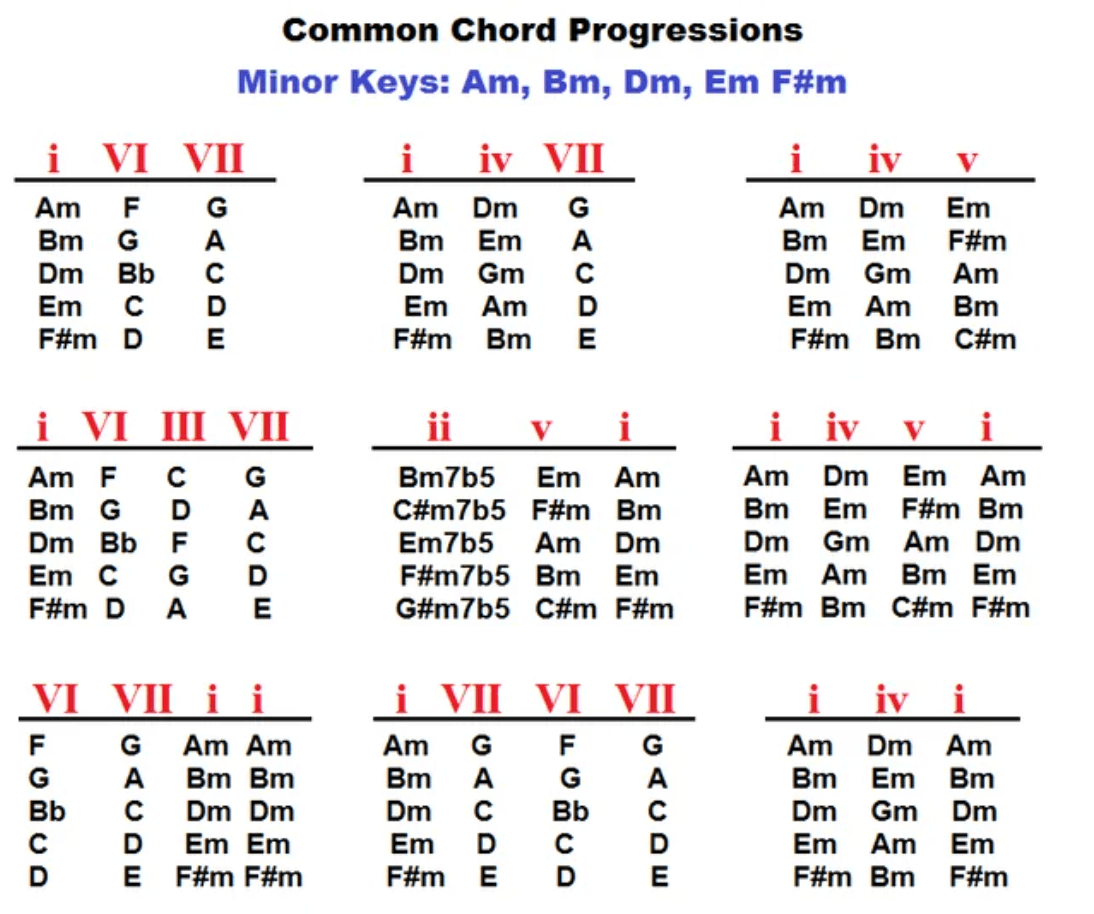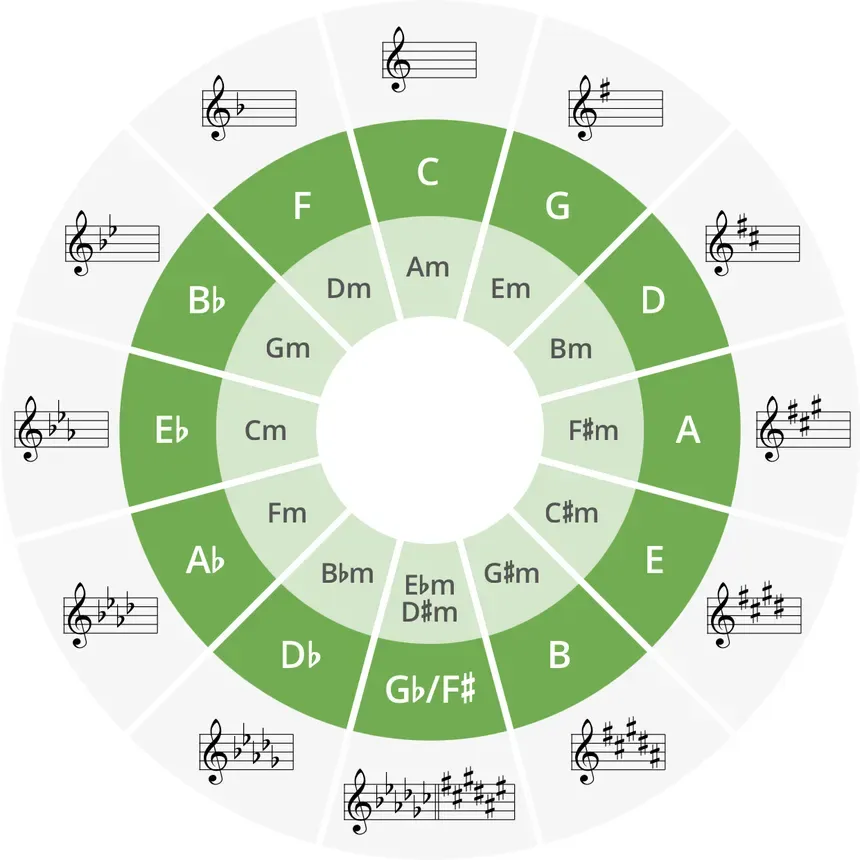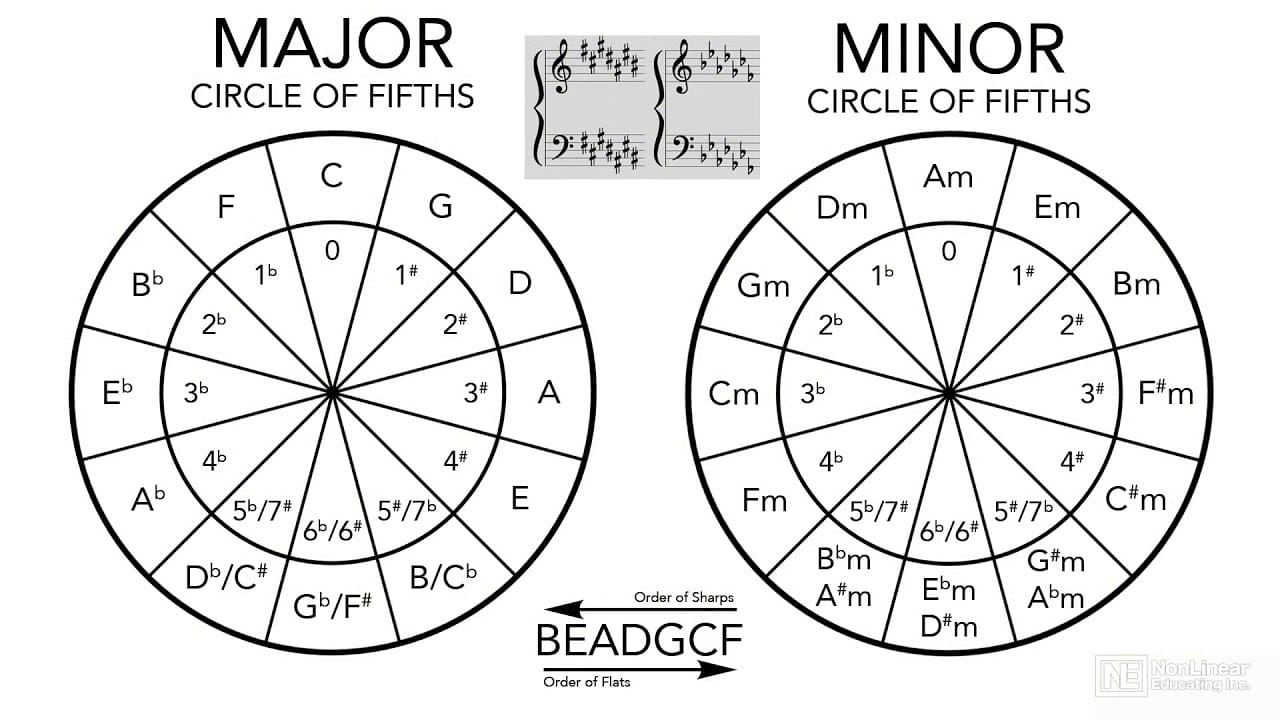Are you tired of writing songs that feel bland or uninspired?
It's time to learn music theory and unlock your full creative potential.
Many songwriters face challenges with repetitive melodies and lack of direction. Understanding fundamental music theory concepts can enhance your composition skills and spark creativity. This blog post will guide you through essential music theory to improve your songwriting.
What is Music Theory?
Music theory is the study of the practices and possibilities of music. It covers the language and notation of music, including notes, scales, chords, rhythm, and melody. Music theory acts as a universal language that helps musicians communicate ideas and dissect compositions effectively.
The Importance of Music Theory in Songwriting
Music theory offers songwriters the tools they need to craft music intentionally. It helps break creative blocks and enhances song structures, enabling more effective compositions. Check out this article from Organizing Sound to learn more!
Music theory for beginners is straightforward and offers immense benefits, making it an approachable step for any aspiring songwriter.
Essential Music Theory Concepts
What Are Scales?
A scale is an organized sequence of notes that forms the foundation for melodies and harmonies. Scales range from major, which often sound happy and bright, to minor, which tend to sound sad or emotional. Other scales like Dorian or Lydian add unique flavors and allows you explore different genres.
Importance in Creating Melodies
Scales guide the selection of notes in a melody, helping evoke specific emotions or moods. Different scales can transform the feel of a song, guiding how a piece resonates with listeners.
If you need help creating melodies check out these AI tools.
Introduction to Chord Progressions
Chord progressions are sequences of chords played in a specific order, forming the harmonic backbone of a song. They range from common progressions that create familiarity to unique progressions that add interest. Check out this article from icon collective to learn more about chord progressions.
Influence on Song Mood
Different progressions set varying emotional tones. For example, the I-IV-V-I progression is uplifting and common in many songs, while the ii-V-I progression is a staple in jazz for its smooth resolution. Advanced progressions add depth and complexity to compositions.
Integrating Music Theory with Songwriting
Combining music theory and songwriting theory leads to intentional and impactful compositions.
To create memorable melodies, use scales and modes, structuring them around a central tone (tonic) to establish emotional resonance. Focus on melodic contour, phrasing, and motif development.
Apply chords and harmonies that complement and enhance the melody. Consider concepts like consonance and dissonance to enrich the harmonic landscape.
Step-by-Step Guide for Beginners
1. Learn the Musical Alphabet and Notes
Begin by understanding the 12 notes in Western music: A, A#/Bb, B, C, C#/Db, and so forth. Recognize their positioning on instruments like the piano and guitar.
2. Understand Major and Minor Scales
Learn the formula for the major scale: Whole, Whole, Half, Whole, Whole, Whole, Half steps, and explore examples such as C Major and A Minor.
3. Build Basic Chords (Triads)
Understand how chords are constructed by stacking thirds (root, third, fifth), and differentiate major, minor, diminished, and augmented chords.
4. Explore Common Chord Progressions
Familiarize yourself with popular progressions like I-IV-V and vi-IV-I-V, understanding their emotional impact.
Integrating Music Theory with Songwriting
Songwriting is an art, but music theory is the secret weapon that transforms raw creativity into intentional, emotionally resonant compositions.
By merging theory with intuition, you’ll unlock the ability to craft melodies that stick, harmonies that captivate, and structures that feel inevitable.
Here’s how to bridge the gap between technical knowledge and creative expression.
Melody: The Heart of Your Song
A memorable melody acts as the emotional core of your song.
Scales and Modes as Emotional Blueprints
Choose a scale or mode that aligns with the mood you want to convey. Major scales (e.g., C Major) radiate optimism, while minor scales (e.g., A Minor) evoke melancholy. Experiment with modes like Dorian (jazzy, soulful) or Mixolydian (bluesy, unresolved) for unique flavors. The tonic (central tone) acts as your melodic “home,” grounding listeners and creating resolution.Shape Your Melodic Contour
A melody’s contour—its rises, falls, and plateaus—shapes its emotional arc. For example:Ascending lines build tension or hope (think of the chorus in “Someone Like You” by Adele).
Descending lines convey resolution or sadness (the verse melody in “Yesterday” by The Beatles).
Arch-shaped melodies (rising then falling) create balance and drama.
Phrasing and Motifs
Treat melodies like sentences: Use pauses (rests) for breath and structure. Develop motifs—short, recurring melodic ideas—to unify your song. For instance, the four-note motif in Beethoven’s Fifth Symphony is iconic, but modern examples include the guitar riff in “Sweet Child O’ Mine” (Guns N’ Roses). Repeat and vary motifs to keep listeners engaged.
Harmony: Elevating Emotion with Chords
Chords are the emotional backdrop for your melody. Use harmony to amplify your message:
Consonance vs. Dissonance
Consonant chords (major, minor triads) feel stable and resolved.
Dissonant chords (diminished, augmented, or 7th chords) add tension, urgency, or mystery.
Example: Radiohead’s “Creep” uses a sudden G Major chord (dissonant in the key of G Minor) to create haunting contrast.
Functional Harmony
Understand chord roles:Tonic (I) = Home
Subdominant (IV) = Departure
Dominant (V) = Tension craving resolution
A I-IV-V progression (e.g., “La Bamba”) feels uplifting, while a vi-IV-I-V (e.g., “Let It Be”) blends introspection and resolve.
Step-by-Step Guide for Beginners
1. Learn the Musical Alphabet and Notes
The 12-note Western system includes naturals (A, B, C…) and sharps/flats (A#/Bb, C#/Db…).
Tip: Memorize piano keys or guitar frets to visualize intervals.
2. Master Major and Minor Scales
Major formula: Whole-Whole-Half-Whole-Whole-Whole-Half (e.g., C Major: C-D-E-F-G-A-B).
Natural Minor formula: Whole-Half-Whole-Whole-Half-Whole-Whole (e.g., A Minor: A-B-C-D-E-F-G).
Practice: Play scales daily to internalize their moods.
3. Build Triads (3-Note Chords)
Major triad: Root + Major 3rd + Perfect 5th (e.g., C-E-G).
Minor triad: Root + Minor 3rd + Perfect 5th (e.g., C-E♭-G).
Diminished/Augmented: Alter the 5th (e.g., C-E♭-G♭ or C-E-G#).
4. Experiment with Chord Progressions
I-IV-V: Timeless and upbeat (used in “Twist and Shout”).
vi-IV-I-V: Modern and emotive (heard in “Someone You Loved” by Lewis Capaldi).
Pro tip: Loop a progression and improvise melodies over it.
Music theory isn’t a rulebook—it’s a toolkit. Start small and experiment fearlessly.

Recommended Resources and Tools
- Online Courses
Courses such as Rick Beato's "Music Theory for Songwriters" provide song-focused lessons.
- Interactive Apps
Suggest using piano or guitar apps that help visualize scales and chords, offering hands-on practice.
- Apply Relative Minors and Borrowed Chords
Expanding your chord palette by using chords from the relative minor or parallel key adds richness to compositions. For instance, in C Major, use chords from A Minor. [Songwriters Co - Advanced Chord Techniques](https://songwriters.co) [LANDR Blog - Borrowed Chords](https://blog.landr.com/music-theory/)
- Use the Circle of Fifths
The Circle of Fifths is a powerful tool to understand key signatures and their relationships. It aids in composing and transitioning between keys smoothly.

Avoiding Common Mistakes
- Lack of Dynamics
Emphasize variations in volume, intensity, and articulation to add expression to your music.
- Neglecting Rhythm
Remember that rhythm is as crucial as melody and harmony, ensuring your compositions are engaging.
Advanced Tips and Techniques
- Exotic Modes
Delve into modes such as Phrygian, Lydian, and Mixolydian, utilizing their distinct sounds to create a unique atmosphere.
- Extended and Altered Chords
Introduce seventh, ninth, and eleventh chords to enrich your harmony. Altered chords add tension and color, enhancing the emotional depth of a song.
- Modulating Keys
Learn techniques for changing keys within a song using pivot chords and direct modulation, offering dynamic emotional progressions for listener interest.
- Advanced Rhythmic Concepts
Embrace polyrhythms to create complex rhythms and utilize syncopation, placing emphasis on unexpected beats to add groove.
- Utilizing Dissonance
Intentional dissonance creates tension that often leads to satisfying resolutions. Genres and songs effectively use dissonance for distinct emotional moments.
Check out this article to learn about how music effects our emotions.
Final Thoughts
Learning music theory equips songwriters with the tools to create compelling, intentional music.
From mastering scales and chord progressions to understanding songwriting theory, this knowledge leads to improved composition skills. Remember, mastering music theory is a continuous journey.
Keep exploring and applying new concepts. Take the first step and learn music theory to elevate your songwriting today. Consider enrolling in a course or using the resources provided.


